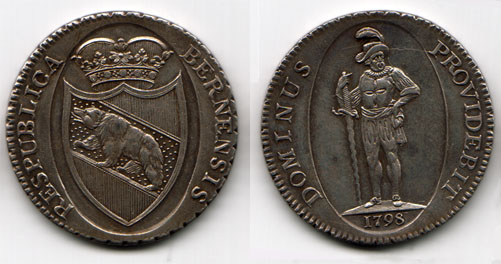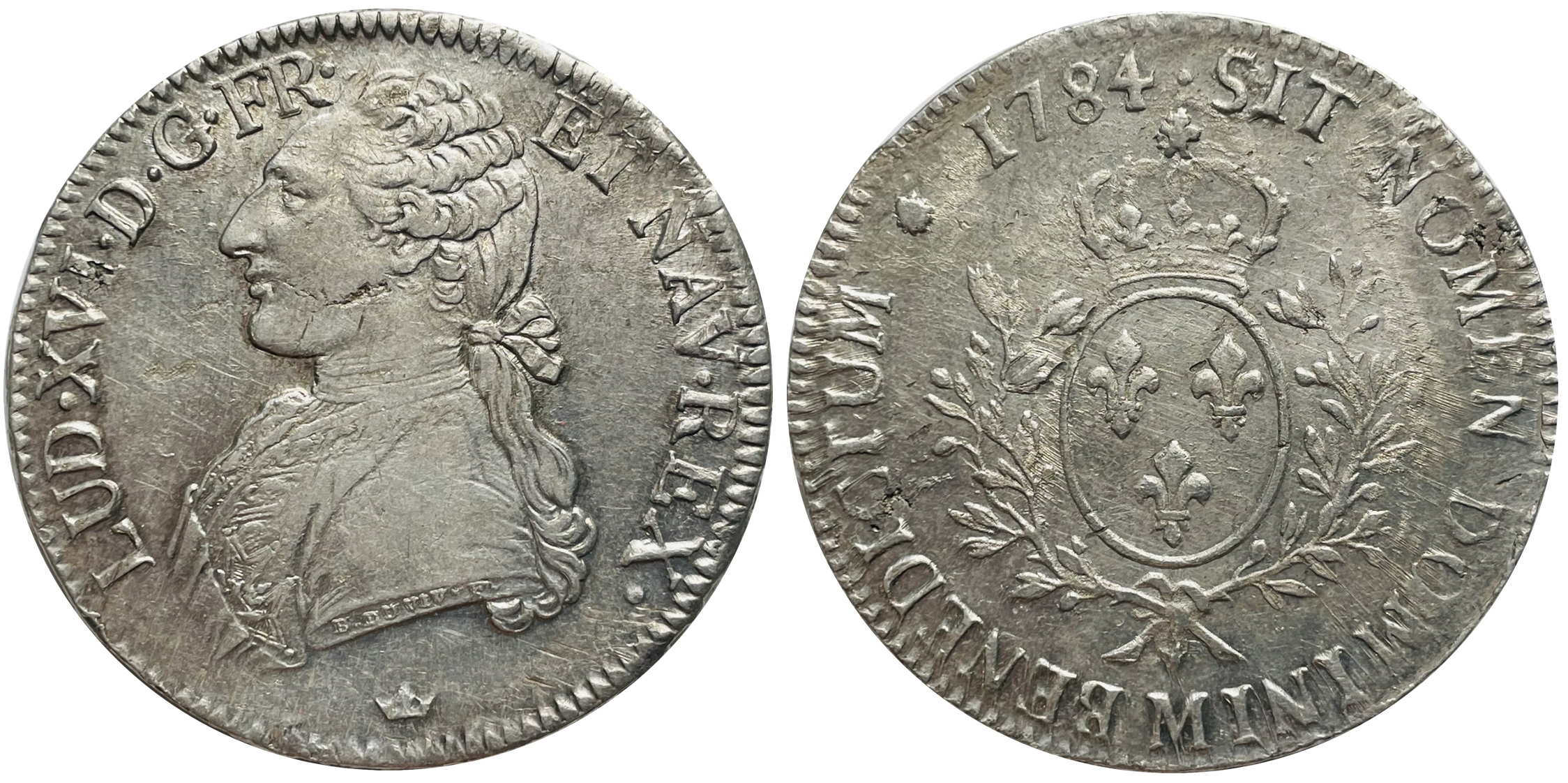|
Berne Thaler
The ''Berne Thaler'' was a coin equivalent to the French silver ''écu'' (German: ''laubthaler'') issued by the Swiss Canton of Bern. It contained 26.67 g fine silver and was valued at 4 livres. The currency of Bern was the ''livre'' (later, franc or frank), divided into 10 batzen or 40 kreuzer. The ''laubthaler'' or ''écu'' was also equivalent to 4 franken of the Helvetic Republic, and afterwards to 4 Berne franken and 4 Vaud francs. Coins In the late 18th century, billon coins were issued in denominations of and 1 Kreuzer, and 1 Batzen, together with silver 10 and 20 Kreuzer, , and 1 Thaler, and gold , 1 and 2 ''Duplone The duplone was a currency used in various Swiss cantons in the late 1700s and early 1800s. Although there is a wide range of conversions due to the differing sizes and gold contents of different canton's duplones, 1 duplone is generally equal to 1 ...''. The Kreuzer coins were inscribed as 1 ''Vierer''. Additionally, French ''écus'' were counterstamped ... [...More Info...] [...Related Items...] OR: [Wikipedia] [Google] [Baidu] |
Écu
The term ''écu'' () may refer to one of several France, French coins. The first ''écu'' was a gold coin (the ''écu d'or'') minted during the reign of Louis IX of France, in 1266. The value of the ''écu'' varied considerably over time, and silver coins (known as ''écu d'argent'') were also introduced. ''Écu'' (from Latin ''scutum'') means shield, and the coin was so called because its design included the coat of arms of France. The word is related to the Catalan language, Catalan ''escut'', Italian language, Italian ''scudo (other), scudo,'' or Portuguese language, Portuguese and Castilian language, Castilian ''escudo''. In English, the ''écu'' was often referred to as the crown, or the French crown in the eras of the crown (English coin), English crown, crown (British coin), British crown, and crown (currency), other crowns. History Origin When Louis IX took the throne, France still used small silver French denier, deniers (abbreviated ''d''.), which had circula ... [...More Info...] [...Related Items...] OR: [Wikipedia] [Google] [Baidu] |
Canton Of Bern
The canton of Bern, or Berne (; ; ; ), is one of the Canton of Switzerland, 26 cantons forming the Switzerland, Swiss Confederation. Its capital city, Bern, is also the ''de facto'' capital of Switzerland. The bear is the heraldic symbol of the canton, displayed on a red-yellow background. Comprising Subdivisions of the canton of Bern, ten districts, Bern is the second-largest canton by both surface area and population. Located in west-central Switzerland, it is surrounded by eleven cantons. It borders the cantons of canton of Jura, Jura and canton of Solothurn, Solothurn to the north. To the west lie the cantons of canton of Neuchâtel, Neuchâtel, canton of Fribourg, Fribourg, and canton of Vaud, Vaud. To the south lies the cantons of canton of Valais, Valais. East of the canton of Bern lie the cantons of Canton of Uri, Uri, Canton of Nidwalden, Nidwalden, Canton of Obwalden, Obwalden, Canton of Lucerne, Lucerne and Canton of Aargau, Aargau. The geography of the canton includes ... [...More Info...] [...Related Items...] OR: [Wikipedia] [Google] [Baidu] |
Berne Frank
The Frank was the currency of the Swiss canton of Bern between 1798 and 1850. It was subdivided into 10 ''Batzen'', each of 10 ''Rappen''. It was worth th the French Écu#Silver écu of 1726, silver écu or 6.67 g fine silver. History The Swiss franc#History, Frank was the currency of the Helvetian Republic from 1798, replacing the Berne thaler, Thaler in Bern. The Helvetian Republic ceased issuing coins in 1803. Bern issued coins between 1808 and 1836. In 1850, the Swiss franc was introduced, with 1 Berne Frank = 1.4597 Swiss francs. Coins Billon coins were issued in denominations of 1, 2, and 5 Rappen, and 1 Batzen, with silver coins for and 5 Batzen and 1, 2 and 4 Franken. Bern also counterstamped various French écu and 6 French livre, livres for use as 40 Batzen coins. References * Modern obsolete currencies Currencies of Switzerland 1800s establishments in Switzerland 1850 disestablishments in Switzerland Canton of Bern {{Money-unit-stub ... [...More Info...] [...Related Items...] OR: [Wikipedia] [Google] [Baidu] |
Vaud Franc
Vaud ( ; , ), more formally Canton of Vaud, is one of the 26 cantons forming the Swiss Confederation. It is composed of ten districts; its capital city is Lausanne. Its coat of arms bears the motto "Liberté et patrie" on a white-green bicolour. Vaud is the third-largest Swiss canton by population and fourth by size. It is located in Romandy, the partially French-speaking western part of the country, and borders the canton of Neuchâtel to the north, the cantons of Fribourg and Bern to the east, the canton of Valais to the south, the canton of Geneva to the south-west, and France to the west. The geography of the canton includes all three natural regions of Switzerland: the Jura Mountains, the Swiss Plateau, and the (Swiss) Alps. It also includes some of the largest lakes of the country: Lake Geneva and Lake Neuchâtel. It is a major tourist destination, renowned for its landscapes and gastronomy. The largest city is Lausanne, followed by Yverdon-les-Bains and Montreux. As ... [...More Info...] [...Related Items...] OR: [Wikipedia] [Google] [Baidu] |
Duplone
The duplone was a currency used in various Swiss cantons in the late 1700s and early 1800s. Although there is a wide range of conversions due to the differing sizes and gold contents of different canton's duplones, 1 duplone is generally equal to 16 franken. This conversion is exact in both the cantons of Graubünden frank, Graubünden and Berne frank, Berne. Duplones had a consistent gold fineness of 0.900 (just below 22 karats) across Switzerland. References Currencies of Switzerland Modern obsolete currencies {{Money-unit-stub ... [...More Info...] [...Related Items...] OR: [Wikipedia] [Google] [Baidu] |
Modern Obsolete Currencies
Modern may refer to: History *Modern history ** Early Modern period ** Late Modern period *** 18th century *** 19th century *** 20th century ** Contemporary history * Moderns, a faction of Freemasonry that existed in the 18th century Philosophy and sociology * Modernity, a loosely defined concept delineating a number of societal, economic and ideological features that contrast with "pre-modern" times or societies ** Late modernity Art * Modernism ** Modernist poetry * Modern art, a form of art * Modern dance, a dance form developed in the early 20th century * Modern architecture, a broad movement and period in architectural history ** Moderne, multiple architectural styles ** Modernisme a.k.a. Catalan Modernism * Modern music (other) Geography *Modra, a Slovak city, referred to in the German language as "Modern" Typography * Modern (typeface), a raster font packaged with Windows XP * Another name for the typeface classification known as Didone (typography) * Modern ... [...More Info...] [...Related Items...] OR: [Wikipedia] [Google] [Baidu] |
Currencies Of Switzerland
A currency is a standardization of money in any form, in use or circulation as a medium of exchange, for example banknotes and coins. A more general definition is that a currency is a ''system of money'' in common use within a specific environment over time, especially for people in a nation state. Under this definition, the British Pound sterling (£), euros (€), Japanese yen (¥), and U.S. dollars (US$) are examples of (government-issued) fiat currencies. Currencies may act as stores of value and be traded between nations in foreign exchange markets, which determine the relative values of the different currencies. Currencies in this sense are either chosen by users or decreed by governments, and each type has limited boundaries of acceptance; i.e., legal tender laws may require a particular unit of account for payments to government agencies. Other definitions of the term ''currency'' appear in the respective synonymous articles: banknote, coin, and money. This article use ... [...More Info...] [...Related Items...] OR: [Wikipedia] [Google] [Baidu] |
1798 Disestablishments
Events January–June * January – Eli Whitney contracts with the U.S. federal government for 10,000 muskets, which he produces with interchangeable parts. * January 4 – Constantine Hangerli enters Bucharest, as List of rulers of Wallachia, Prince of Wallachia. * January 22 – A coup d'état is staged in the Netherlands (Batavian Republic). Unitarian Democrat Pieter Vreede ends the power of the parliament (with a conservative-moderate majority). * February 10 – The Pope is taken captive, and the Papacy is removed from power, by French General Louis-Alexandre Berthier. * February 15 – U.S. Representative Roger Griswold (Fed-CT) beats Congressman Matthew Lyon (Dem-Rep-VT) with a cane after the House declines to censure Lyon earlier spitting in Griswold's face; the House declines to discipline either man.''Harper's Encyclopaedia of United States History from 458 A. D. to 1909'', ed. by Benson John Lossing and, Woodrow Wilson (Harper & Brothers, ... [...More Info...] [...Related Items...] OR: [Wikipedia] [Google] [Baidu] |






